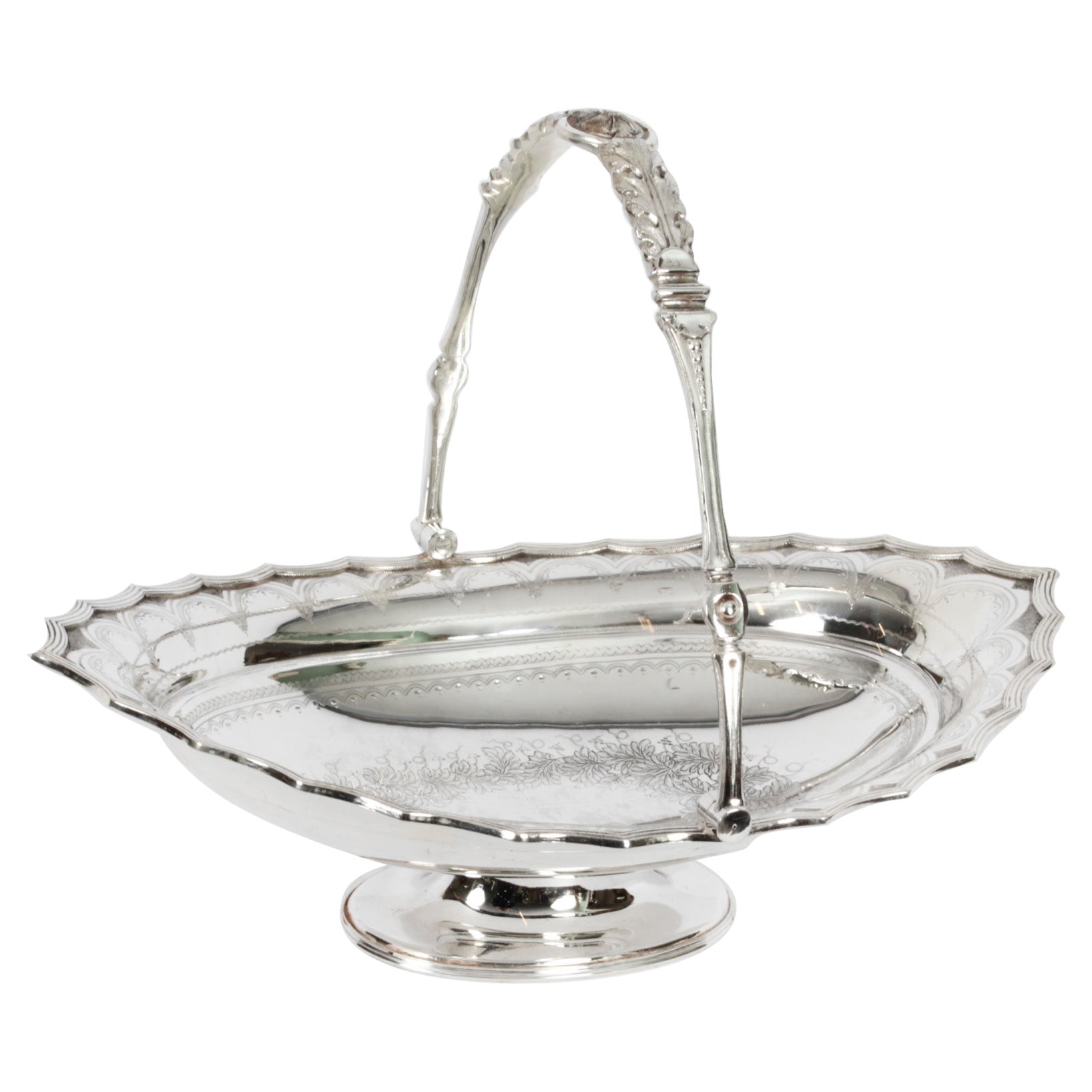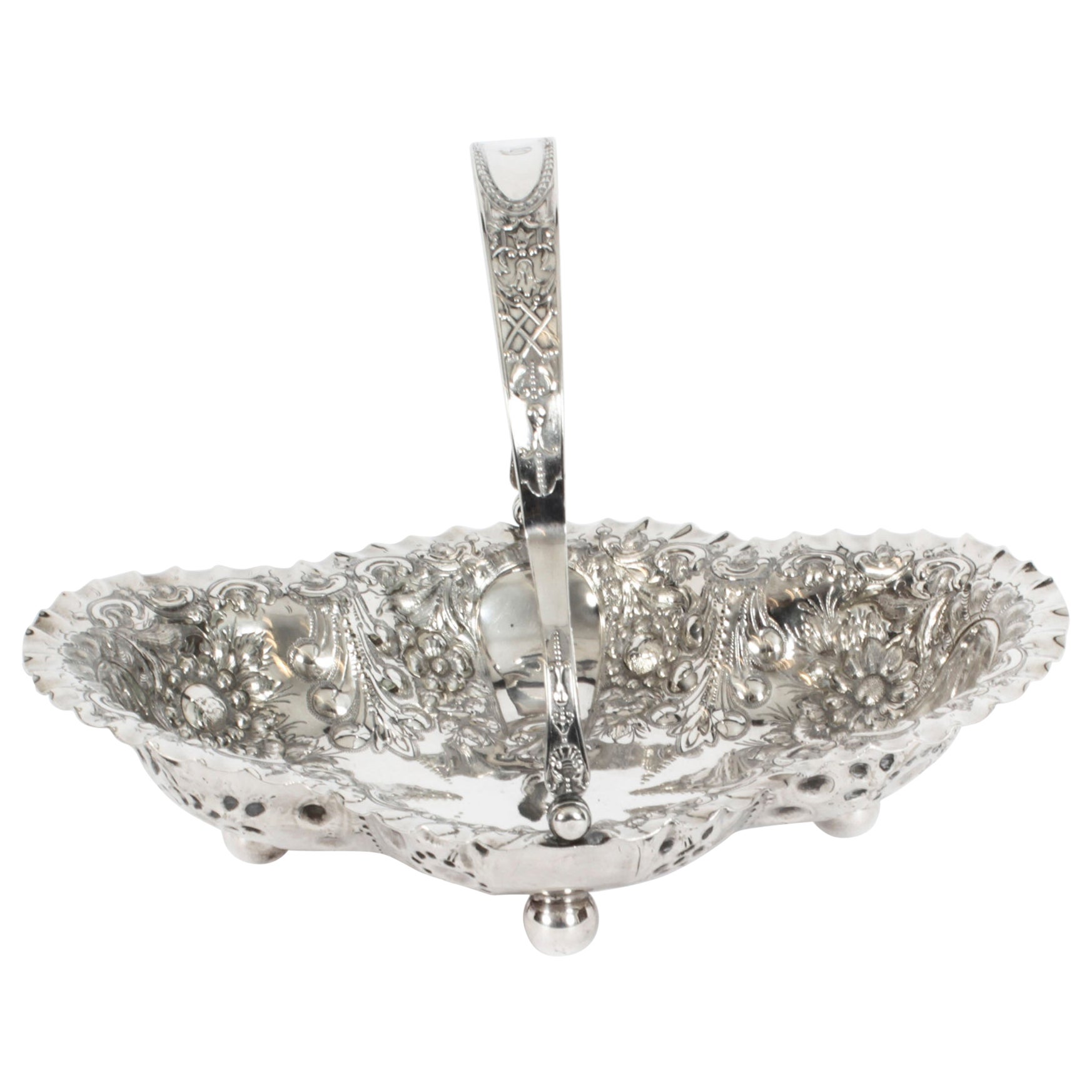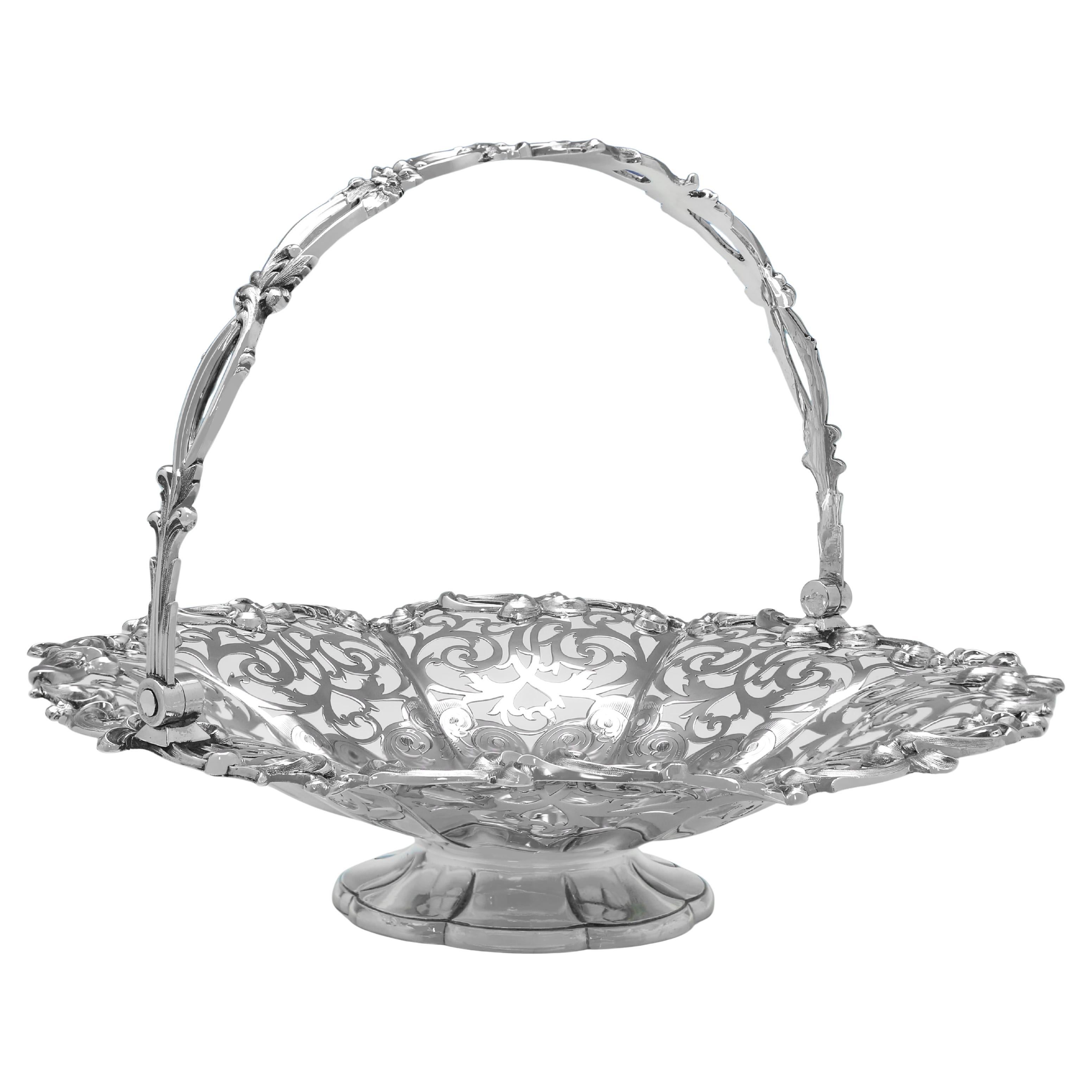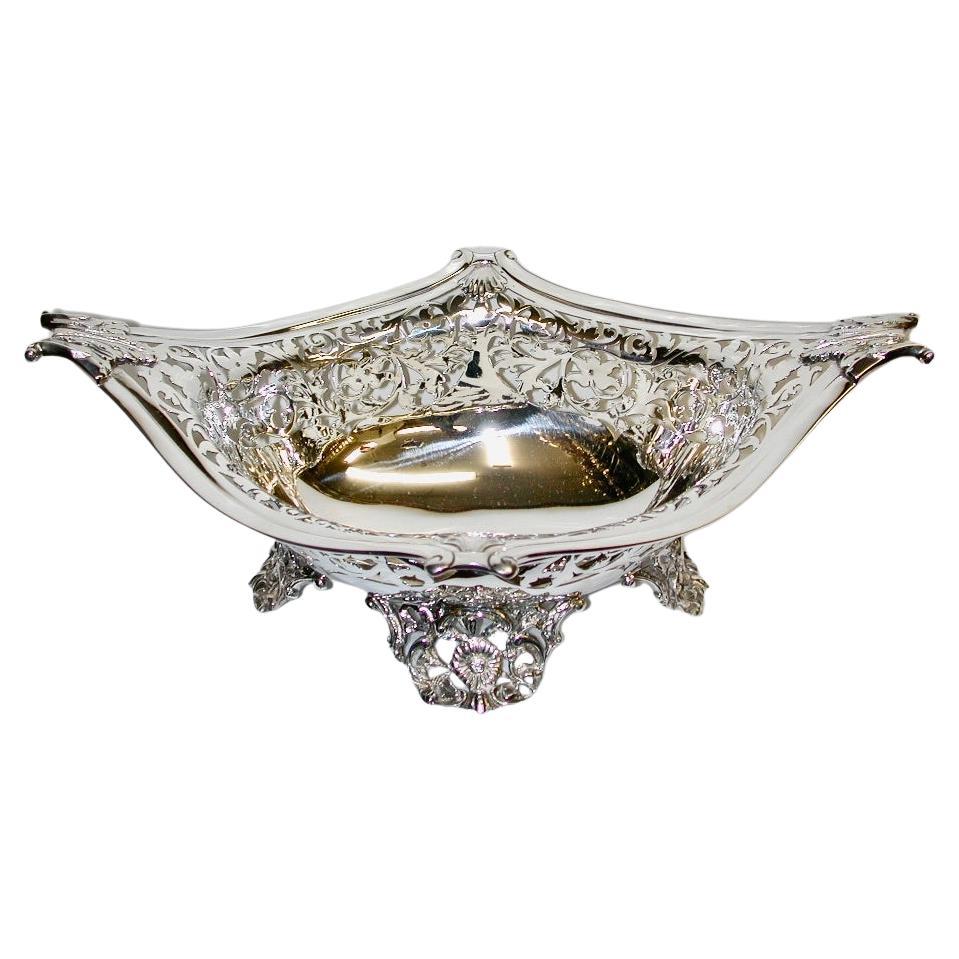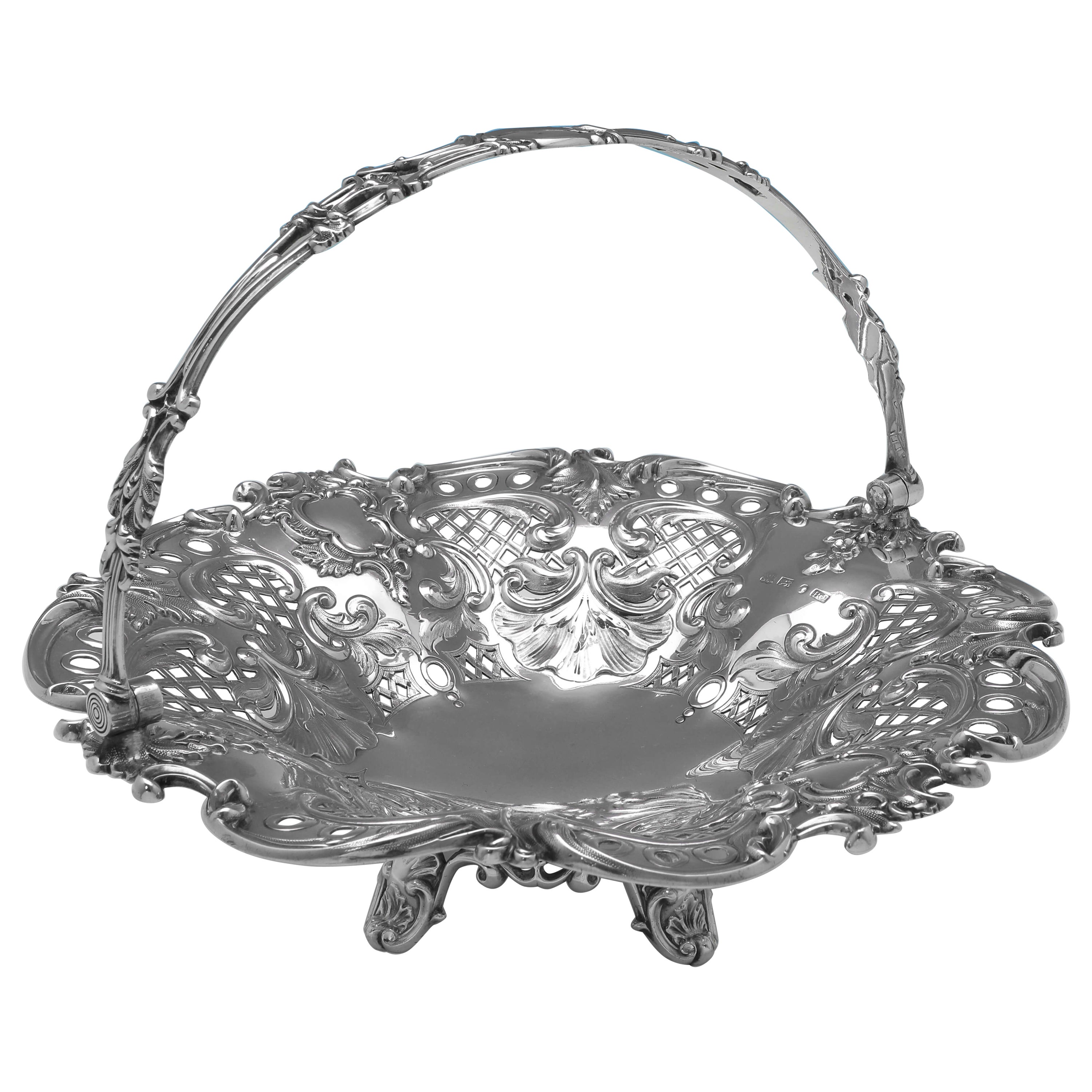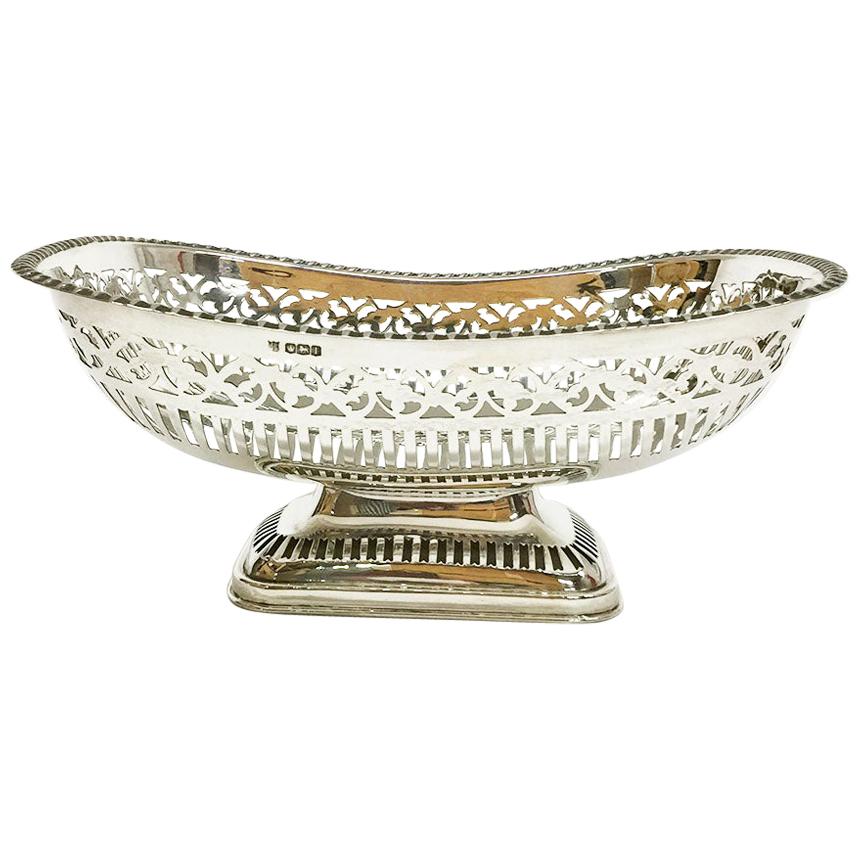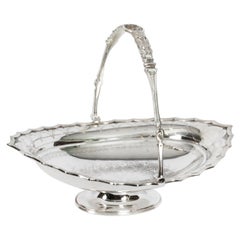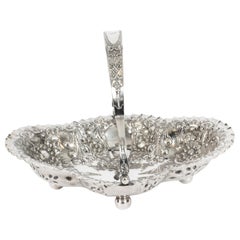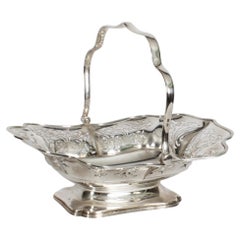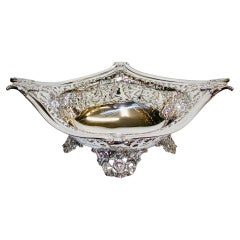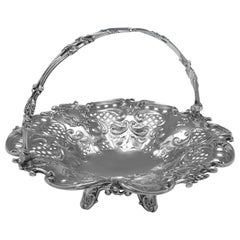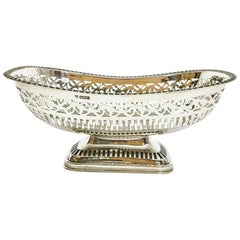Objekte ähnlich wie Antique Old Sheffield Plated Fruit Basket by Matthew Boulton 19th Century
Video wird geladen …
Möchten Sie mehr Bilder oder Videos?
Zusätzliche Bilder oder Videos von dem*der Anbieter*in anfordern
1 von 16
Antique Old Sheffield Plated Fruit Basket by Matthew Boulton 19th Century
455,44 €
Angaben zum Objekt
This is a stunning George III Old Sheffield Plate swing handled cake/fruit basket bearing the sunburst makers marks of the world renowned silversmith Matthew Boulton, circa 1820 in date.
The basket features a swing handle, is chased and engraved with flowers, scrolling stiff leaves and fruiting vine and has a wonderful engraved coat of arms in the centre.
The attention to detail is absolutely fantastic and it is certain to attract attention wherever it is placed.
Condition:
In excellent condition with clear makers marks and no dings, dents or signs of repair. Please see photos for confirmation.
Dimensions in cm:
Height 24 cm x Width 30 cm x Depth 30 cm
Dimensions in inches:
Height 9 inches x Width 1 foot x Depth 1 foot
Matthew Boulton
Boulton was not a "goldsmith" or a "silversmith" in the accepted sense, yet for his achievements and services to the craft of goldsmithing he is fully worthy of inclusion in the list of great English goldsmiths.
Matthew Boulton was born in Birmingham on 3 September 1728. His father Matthew Boulton (senior) was a "toy maker" and silver stamper specialized in the production of shoe-buckles.
Boulton junior was taken into partnership in 1749 and was left in sole charge of the business after the death of his father in 1759.
Boulton had the ambition to establish a manufacturing complex where craftsmen in the various branches of the "toy" trade would work together under one roof, enabling him to reap both wholesale and retail profits. In 1761 he realized his project purchasing a one-hundred- year-lease of the "Soho" estate at Handswoth Heath (two miles from Snow Hilton the Wolverhampton Road).
In 1762 Boulton took into unofficial partnership John Fothergill who would act as a travelling salesman to advertise his wares and the factory moved to Soho in the same year.
The partnership concentrated in the production of steel "toys" a little later on buttons and buckles made in a variety of substances, including , of course, silver. In 1762 Soho factory began to produce articles in "Sheffield" plate and one of the first to adopt "Sterling silver thread" edging which prevent to reveal the underlying copper.
Boulton soon became the largest manufacturer of "Sheffield plate" of the country expanding the business of Soho manufactory in the production of bijouterie, objects d'art and de virtue, in ormolu, pinchbeck and shell, and in clocks.
In 1765 Boulton began the manufacture of pieces in solid silver, being obliged to send every piece of plate to Chester to be marked (Chester was the nearest assay office, 72 miles away from Birmingham). Boulton was the promoter a petition obtaining in 1773 the Royal Assent to assay silver in Birmingham (the same was for Sheffield).
Boulton & Fothergill entered their joint mark consisting of their initials, MB before IF. After the death of Fothergill (1782) Boulton punched his plate with his initials alone.
When manufacturers of plated ware were permitted to register their marks at the Assay Office in Sheffield (1784), Boulton registered his mark of "twin suns" under the name Boulton M. & Co.
The most important designers for Boulton plate in the neo-classic taste were Robert Adams and James Wyatt.
Matthew Boulton died on 17 August 1809.
The mark MB continued to be used by Matthew Boulton Plate Co until 1832.
Old Sheffield Plate - or ‘fused plate’ as it is sometimes known, was the first commercially viable method of plating metal.
The material was accidentally invented by Thomas Boulsover, of Sheffield's Cutlers Company, in 1743. While trying to repair the handle of a customer's decorative knife, he heated it too much and the silver started to melt. When he examined the damaged handle, he noticed that the silver and copper had fused together very strongly. Experiments showed that the two metals behaved as one when he tried to reshape them, even though he could clearly see two different layers.
Boulsover set up in business, funded by Strelley Pegge of Beauchief, and carried out further experiments in which he put a thin sheet of silver on a thick ingot of copper and heated the two together to fuse them. When the composite block was hammered or rolled to make it thinner, the two metals were reduced in thickness at similar rates. Using this method, Boulsover was able to make sheets of metal which had a thin layer of silver on the top surface and a thick layer of copper underneath. When this new material was used to make buttons, they looked and behaved like silver buttons but were a fraction of the cost.
The technique Boulsover developed was to sandwich an ingot of copper between two plates of silver, tightly bind it with wire, heat it in a furnace and then mill it out in to sheet, from which objects could be made.
Our reference: A4520
- Maße:Höhe: 24 cm (9,45 in)Breite: 30 cm (11,82 in)Tiefe: 30 cm (11,82 in)
- Stil:George III. (Im Stil von)
- Materialien und Methoden:
- Herkunftsort:
- Zeitalter:
- Herstellungsjahr:circa 1820
- Zustand:
- Anbieterstandort:London, GB
- Referenznummer:Anbieter*in: A45201stDibs: LU950645390982
Anbieterinformationen
5,0
Platin-Anbieter*in
Premium-Anbieter*innen mit einer Bewertung über 4,7 und 24 Stunden Reaktionszeit
Gründungsjahr 1983
1stDibs-Anbieter*in seit 2012
1.381 Verkäufe auf 1stDibs
Typische Antwortzeit: <1 Stunde
Verbände
LAPADA - The Association of Arts & Antiques Dealers
- VersandAngebot wird abgerufen …Versand von: London, Vereinigtes Königreich
- Rückgabebedingungen
Einige Inhalte dieser Seite wurden automatisch übersetzt. Daher kann 1stDibs nicht die Richtigkeit der Übersetzungen garantieren. Englisch ist die Standardsprache dieser Website.
Authentizitätsgarantie
Im unwahrscheinlichen Fall eines Problems mit der Echtheit eines Objekts kontaktieren Sie uns bitte innerhalb von 1 Jahr für eine volle Rückerstattung. DetailsGeld-Zurück-Garantie
Wenn Ihr Objekt nicht der Beschreibung entspricht, beim Transport beschädigt wurde oder nicht ankommt, kontaktieren Sie uns bitte innerhalb von 7 Tagen für eine vollständige Rückerstattung. DetailsStornierung innerhalb von 24 Stunden
Sie können Ihren Kauf jederzeit innerhalb von 24 Stunden stornieren, ohne jegliche Gründe dafür angeben zu müssen.Geprüfte Anbieter*innen
Unsere Anbieter*innen unterliegen strengen Dienstleistungs- und Qualitätsstandards, wodurch wir die Seriosität unserer Angebote gewährleisten können.Preisgarantie
Wenn Sie feststellen, dass ein*e Anbieter*in dasselbe Objekt anderswo zu einem niedrigeren Preis anbietet, werden wir den Preis entsprechend anpassen.Zuverlässige weltweite Lieferung
Unsere erstklassigen Versandunternehmen bieten spezielle Versandoptionen weltweit, einschließlich individueller Lieferung.Mehr von diesem*dieser Anbieter*in
Alle anzeigenAntiker viktorianischer versilberter Obstkorb aus dem 19. Jahrhundert
Dies ist eine erstaunliche antike viktorianische versilbert Obstkorb, ca. 1860 in Datum.
Der ovale Korpus ist mit einer fabelhaften Blattgravur versehen.
Sie trägt auf dem So...
Kategorie
Antik, 1860er, Englisch, Viktorianisch, Waren aus Old Sheffield Plate un...
Materialien
Versilberung
Antiker viktorianischer versilberter Obstkorb, James Dixon, 19. Jahrhundert
Von James Dixon & Sons
Dies ist eine außergewöhnlich feine antike englische viktorianischen versilbert Obstkorb mit Punzierungen für den berühmten Silberschmied, James Dixon, ca. 1880 in Datum.
Dieser ...
Kategorie
Antik, 1880er, Englisch, Viktorianisch, Waren aus Old Sheffield Plate un...
Materialien
Versilberung
Antike englische Edward VII Sterling Silber Obst Brotkorb Sheffield, 1907
Von Atkin Brothers
Dies ist eine außergewöhnlich feine antike englische Edwardian Sterling Silber Obstkorb mit Punzierungen für Sheffield 1907 und der Hersteller Marke von Atkin Brothers.
Dieser prä...
Kategorie
Antik, Frühes 20. Jhdt., Englisch, Edwardian, Waren aus Old Sheffield Pl...
Materialien
Versilberung
Antiker Korb aus Old Sheffield Silber auf Kupfer, George III.-Periode, 19. Jahrhundert
Dies ist eine fabelhafte antike neo-klassischen George III Old Sheffield Platte Silber auf Kupfer Brotkorb / Obstschale, circa 1810 in Datum.
Der rechteckige Korb mit schwenkbarem H...
Kategorie
Antik, 19. Jahrhundert, Englisch, Neoklassisch, Geschirr
Materialien
Versilberung, Kupfer
Antiker Korb aus Old Sheffield Silber auf Kupfer, George III.-Periode, 18. Jahrhundert
Dies ist eine fabelhafte antike neo-klassischen George III Old Sheffield Platte Silber auf Kupfer Brotkorb / Obstschale, circa 1780 in Datum.
Die ovale Schale mit schwenkbarem He...
Kategorie
Antik, 1780er, Englisch, George III., Waren aus Old Sheffield Plate und ...
Materialien
Old Sheffield Plate
Antike antike Old Sheffield Tellerterrine und gewölbter Deckel, 18. Jahrhundert
Dies ist eine prächtige große antike englische Old Sheffield Silberplatte Terrine mit dem ursprünglichen gewölbten Deckel, ca. 1790 in Datum.
Es trägt das Kreuzzeichen für I. E steh...
Kategorie
Antik, 1790er, Englisch, Waren aus Old Sheffield Plate und Tafelsilber
Materialien
Old Sheffield Plate
Das könnte Ihnen auch gefallen
Sterlingsilber-Obstkorb aus dem 19. Jahrhundert, der 1853 in London hergestellt wurde
Von James & Nathaniel Creswick
Punziert in London im Jahr 1853 von James & Nathaniel Creswick, diese attraktive, viktorianische, antike Sterling Silber Korb, verfügt über eine gegossene Grenze, durchbohrt und grav...
Kategorie
Antik, 1850er, Englisch, Viktorianisch, Dekorative Körbe
Materialien
Sterlingsilber
Antiker viktorianischer Obstkorb aus Silber, datiert 1898, London, William Hutton & Sons
Von William Hutton & Sons
Antiker viktorianischer Silber Obstkorb datiert 1898 London William Hutton & Sons Ltd
Fabelhafter Korb, der nicht nur für Obst, sondern auch für andere Dinge verwendet werden kann, z...
Kategorie
Antik, 1890er, Englisch, Viktorianisch, Sterlingsilber
Materialien
Sterlingsilber
Antiker viktorianischer silberner viktorianischer Korb aus Sterling - Sheffield 1845 - Hawksworth Eyres
Dieser attraktive Korb aus antikem Sterlingsilber, der 1845 in Sheffield von Hawksworth Eyres & Co. gestempelt wurde, ist kunstvoll gestaltet, steht auf gegossenen Muschelfüßen und w...
Kategorie
Antik, 1840er, Englisch, Viktorianisch, Sterlingsilber
Materialien
Sterlingsilber
Englischer Obstkorb aus Sterlingsilber von James Deakin & Sons, 1928
Von James Deakin & Sons
Englischer Obstkorb aus Sterlingsilber von James Deakin & Sons, 1928
Rechteckiger Obstkorb aus englischem Silber auf einem Sockel erhöht.
Ein Korb aus Sheffield-Sterlingsilber mit ...
Kategorie
Frühes 20. Jahrhundert, Britisch, Sterlingsilber
Materialien
Silber
L & WS Englischer viktorianischer versilberter Obst Brotkorb mit Fuß und Henkel, viktorianisch, versilbert
Antiker L & WS English Victorian Silver Plated Footed Fruit Bread Basket mit Henkel. Circa Mitte des 20. Jahrhunderts.
Abmessungen: 3,5" H x 12" B x 9,5" T.
Kategorie
Mitte des 20. Jahrhunderts, Viktorianisch, Dekoschalen
Materialien
Versilberung
Englischer viktorianischer Tortenkorb mit Henkel aus Silber von Melvin Pratt aus dem späten 19. Jahrhundert
Ein runder, silberner Tortenkorb von Melvin Pratt aus dem späten 19. Jahrhundert, mit durchbrochenem Design und Blättermotiven. Dieses in England von Melvin Pratt in den späten Jahre...
Kategorie
Antik, 19. Jahrhundert, Englisch, Viktorianisch, Waren aus Old Sheffield...
Materialien
Silber
